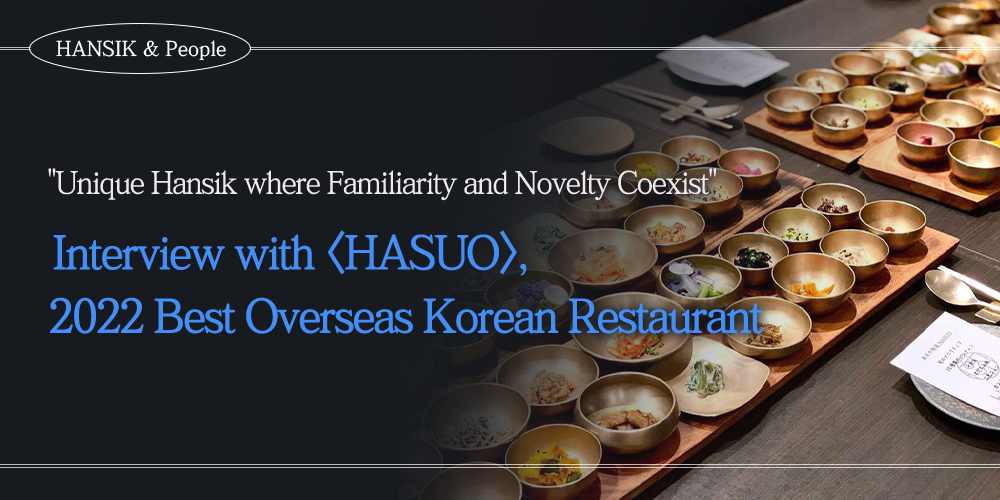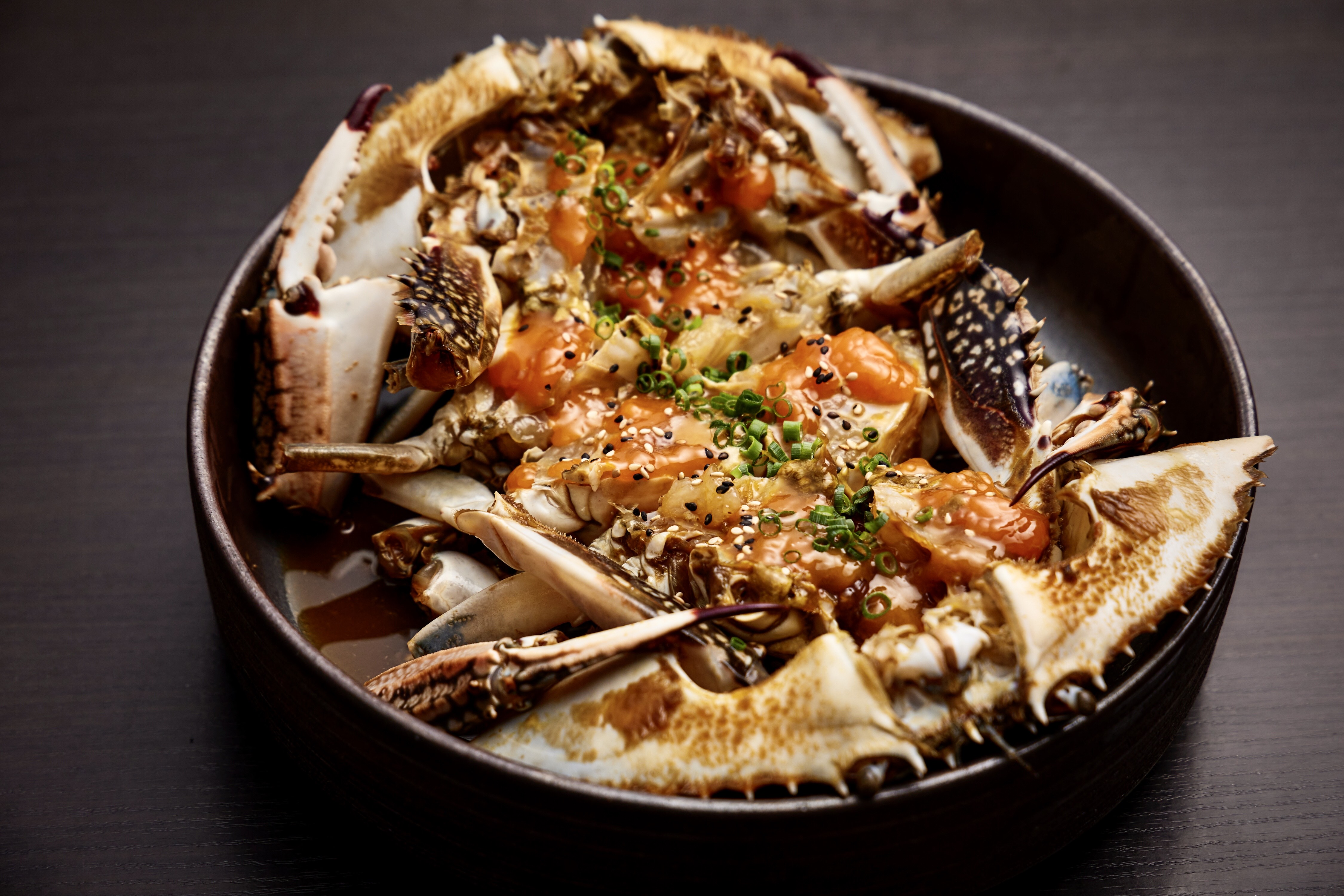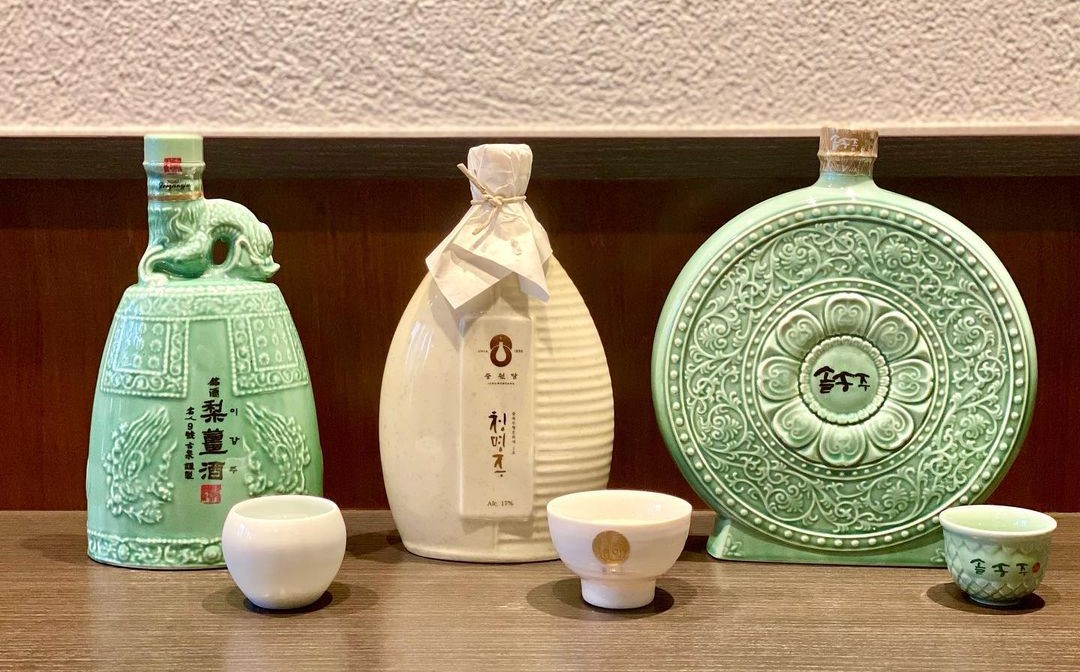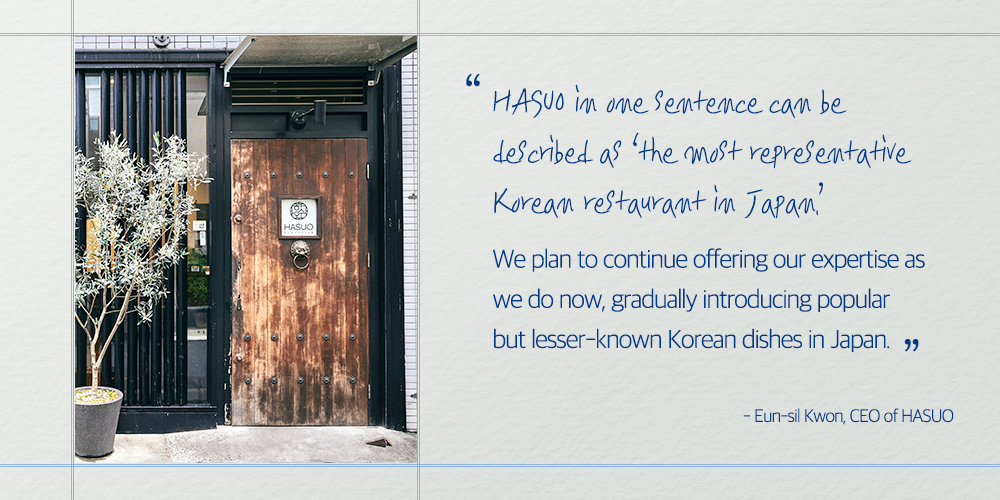한식 읽기 좋은 날
Interview with <HASUO>, the Best Overseas Korean Restaurant
HANSIK & People

In Tokyo's Shibuya district, there's a Korean restaurant that continuously attracts young people. 'HASUO,’ which is highly regarded by local youth as a gastronomic destination, embraces traditional Korean cuisine with modern sensibility, pursuing a new style of Hansik that cannot be found elsewhere.
Since its opening in 2018, HASUO has garnered praise for presenting diverse and sophisticated Korean dishes. Earlier this year, it was selected as one of the '2022 Best Overseas Korean Restaurants' designated by the Ministry of Agriculture, Food and Rural Affairs and the Korean Food Promotion Institute. Moreover, in the recently released 'Michelin Guide Tokyo 2024,' HASUO achieved the distinction of being the only Korean restaurant featured.
What's the secret behind HASUO's captivation of local Japanese food enthusiasts? We sat down with Eun-sil Kwon, the CEO of HASUO, to listen to her success story.

A Regular Customer Turned Owner of a Korean Restaurant
There is a special connection between CEO Kwon and HASUO. Before owning the restaurant, Kwon used to be a regular customer at the restaurant. After her arrival in Japan in 2007, Kwon recalls how difficult it was for her to find a Korean restaurant that she truly enjoyed. However, this all changed following her incidental visit to HASUO. The food she experienced here was beyond simple delight.
"Even after living in Japan for a long time, there weren't many Korean restaurants that came to mind when asked for recommendations. However, around 2020, I encountered a Korean restaurant that I truly found delicious for the first time, and that was HASUO,” Kwon reminisced.

After consistently visiting HASUO for over two years, Kwon acquired the restaurant from its previous owner in 2022. "I wanted to promote authentic Korean cuisine rather than the Japanese fusion version of Hansik," Kwon explained. She elaborated that her intention was “to create a restaurant that would appeal to a wide range of generations by presenting Hansik in a modern and an appealing manner.”
The term ‘HASUO' is the name of a herb mentioned in Donguibogam, the book of Principles and Practice of Eastern Medicine. It is said to have originated from an old tale where a person with the Chinese surname ‘Ha’ consumed this herb, resulting in a darkening of their hair and improved health. The restaurant’s name ‘HASUO’ also reflects the hope for health and happiness, just as the old tale. “Through the name HASUO, we wish our guests to have healthy food and lead healthy and joyful lives," explained Kwon, emphasizing that, “Chef Jeong-jun Lee, who has expertise in both Korean, and Western cuisine and the owner, myself, who is a food connoisseur are at the forefront of providing the best dining experience.”

"Promoting Korea to the World Through Innovative New Korean Cuisine"
A more accurate name of HASUO is 'New Korean HASUO.' Kwon defined 'New Korean' as ‘New cuisine that reinterprets royal court-based Korean dishes in a modern way, offering both authentic Korean cuisine and a new culinary experience simultaneously.’ Her strategy revolves around distinguishing HASUO from the typical Hansik by infusing originality and creativity.
As defined by Kwon, the dishes encountered at HASUO feel both familiar and novel. For example, ordinary-looking dishes like gamjajeon (potato pancake) and jangjorim (braised beef in soy sauce) have French techniques incorporated to create unique flavors, while cold vegetable soup is presented in the form of jelly offering an intriguing texture. Kwon pointed out, "Maintaining the traditional flavors of Korea while infusing the chef's style into the dishes is the unique competitive edge of HASUO."

The signature dish at HASUO is Ganjanggejang (soy sauce marinated crab). This dish is meticulously crafted from fresh and roe-rich blue crabs, and is prepared according to the arrival time of the ordering guest to eliminate the formation of a fishy odor while offering only the intense natural savory flavors of the crab. "Even guests who have experienced ganjanggejang at specialized restaurants in Korea have praised our dish,” Kwon said proudly.

Tableware that encapsulates the beauty of Korea plays a pivotal role in illuminating the dishes. The arrangement of side dishes elegantly placed in Bangjja Yugi (forged high tin bronzeware) has become a trademark that delights both the eye and palate. Additionally, the specially crafted soban (small plates) and trays, acquired directly from artisans specializing in ceramics and lacquerware in Korea, also enjoy high popularity.
"Although it's a small place, we strive to use Korean-made items and utensils throughout the restaurant. We hope that someday we can showcase artworks by Korean artists at HASUO," said Kwon.

Pairing with Traditional Korean Liquor: The New Trend that Enhances the Flavors of Hansik
Alcohol accompanying a meals often customary to deepen the dining experience. Just as wine accompanies Western cuisine, HASUO offers traditional Korean liquors alongside its Korean dishes. HASUO boasts a wide variety of traditional Korean drinks including Sogokju, Cheongmyeongju, Jukryeokgo, Munbaeju, and Leegangju, and as each possess charms that are uniquely different from Japanese alcohol, there is much interest in these Korean alcoholic drinks.

Kwon explained, “As there isn't a wide variety of Korean liquors available in Japan, guests are often amazed to find the diverse array of traditional liquors offered at HASUO.” She further added, “Similar to the upscale 'Nihonshu' (Japanese sake) served alongside Japanese cuisine, it seems that Korean traditional liquors are enjoying globalization and enhancement alongside Hansik.”
Kwon continued, “I hope that HASUO could contribute even slightly to promoting Korean traditional liquors in Japan.” Kwon’s heartfelt commitment to promoting Korean culture despite practical challenges such as liquor distribution and import laws is palpable.

Vigorous Steps Towards the Advancement of Hansik
Kwon stresses that now is the time to make efforts for the refinement of Hansik. Although the awareness level of Hansik within Japan is higher than ever, she believes that there still exists a distorted perception of Hansik.
Kwon explained, “The popularization of Hansik in Japan has progressed to a point where not experiencing it seems unusual. Even Japanese companies are showing interest in operating Korean restaurants.” She continued, “While there has been significant improvement compared to the past, there still exists an image of Korean food being cheap, spicy, and overly stimulating, seen as a passing trend.” She emphasized the need for not just quantitative but also qualitative growth in Korean restaurants through the refinement of Hansik.

As Kwon dreams of the advancement of Hansik, her aspirations and affection for HASUO are inevitably profound. When asked to introduce HASUO in one sentence, Kwon replied, ‘the most representative Korean restaurant in Japan.' She further shared her enthusiastic plan to “continue to showcase various lesser-known Korean dishes in Japan.” As a Korean restaurant that embodies both expertise and popularity, we look forward to the future endeavors of HASUO.
Adress │ 5-10-3 Hiroo, Shibuya-ku, Tokyo Frostbird Hiroo 1F
Hours │ Wednesday-Monday (11:15AM – 12:40PM, 1:00PM-2:30PM, 6PM-10:00PM) / Closed on Tuesday

 한국어
한국어
 English
English






